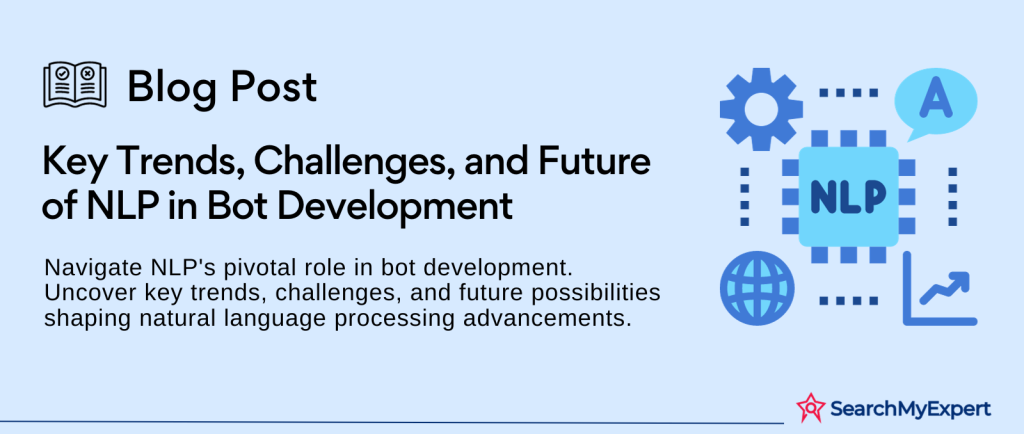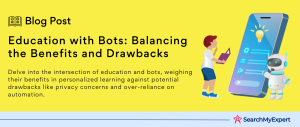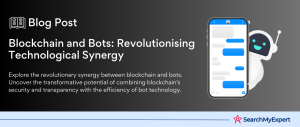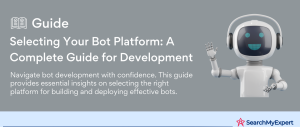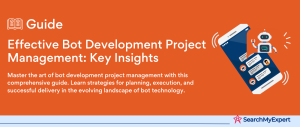Understanding Natural Language Understanding (NLU) in Bot Development
Natural Language Understanding (NLU) is a critical component in the field of bot development, operating as a subset of Natural Language Processing (NLP). NLU focuses on enabling machines to understand and interpret human language in a meaningful way. This technology goes beyond mere word recognition; it delves into understanding the intent and context of what is being said. This understanding is crucial for bots to interact naturally and effectively with users, making them more than just automated responders.
The Role of NLU in Bot Development
- Enhanced Interaction: NLU equips bots with the ability to understand the nuances of human language, including slang and colloquialisms. This leads to more natural and fluid conversations between bots and users.
- Contextual Understanding: Bots powered by NLU can grasp the context behind user inputs, allowing for more accurate responses and interactions.
- Handling Complex Queries: With NLU, bots can handle complex and multi-turn conversations, providing accurate responses to layered user queries.
Benefits of NLP-Powered Bots
Improved User Experience:
- Personalization:
NLP bots can analyze and learn from user interactions, offering personalized experiences and responses. - Efficiency in Communication: These bots can quickly process and respond to user queries, reducing wait times and improving satisfaction.
Efficiency in Operations:
- Automated Handling of Queries:
NLP bots can handle a large volume of queries simultaneously, freeing up human agents for more complex tasks. - Error Reduction:
By understanding user intent, NLP bots reduce errors in automated responses, leading to more effective resolutions.
Scalability:
- Handling Increased Workloads:
NLP bots can scale up as user interactions increase, providing consistent performance regardless of the volume. - Adaptable to Different Domains:
These bots can be easily adapted and trained for different industries and sectors.
Applications of NLP Bots
Customer Service
- 24/7 Availability:
NLP bots in customer service can operate around the clock, providing instant responses to customer inquiries. - Handling Routine Queries:
These bots efficiently handle routine and repetitive questions, ensuring quick resolution and improved customer satisfaction.
Education
- Personalized Learning: In education, NLP bots can offer customized learning experiences, adapting to the individual needs and learning pace of students.
- Interactive Learning:
These bots can make learning more interactive and engaging, using conversational interfaces to teach and quiz students.
Virtual Assistants
- Personal Assistants: NLP bots serve as personal assistants, helping users with daily tasks like scheduling, reminders, and information retrieval.
- Integration with IoT:
These bots can integrate with IoT devices, enhancing smart home and office experiences through voice or text commands.
Understanding Text Data
Preprocessing Text Data for NLP Bots
In the realm of NLP, preprocessing text data is a fundamental step. It involves transforming raw text into a more manageable and standardized format that bots can easily interpret and analyze.
Tokenization
- Breaking Down Text: Tokenization is the process of breaking down text into smaller units called tokens, which can be words, phrases, or symbols.
- Facilitates Analysis:
This step is crucial as it simplifies the subsequent processes of parsing and understanding the text by the bot.
Normalization
- Standardizing Text:
Normalization involves converting text into a uniform format. This includes converting all characters to lowercase, removing punctuation, and correcting spelling errors. - Consistent Data: It ensures that the bot interprets words with different cases or variants as the same word, aiding in accurate analysis.
Stemming and Lemmatization
- Reducing Words to Base Form: Stemming and lemmatization are techniques used to reduce words to their root form. While stemming simply chops off word endings, lemmatization considers the context and transforms the word to its meaningful base form.
- Enhances Understanding:
This process aids in grouping different forms of a word as one, helping the bot to understand the text more effectively.
Part-of-Speech Tagging and Entity Recognition
Part-of-Speech Tagging
- Identifying Word Classes: This involves tagging each word in a sentence with its corresponding part of speech (like noun, verb, adjective), based on its definition and context.
- Contextual Analysis:
This step is crucial for understanding the structure and meaning of sentences, which aids in accurate response generation by the bot.
Entity Recognition
- Identifying Key Elements:
Entity recognition is about identifying and classifying key elements in the text into predefined categories such as names, organizations, locations, etc. - Enhances Interaction:
By recognizing these entities, bots can provide more relevant and precise responses, especially in tasks like information retrieval or answering specific queries.
Sentiment Analysis and Understanding User Intent
Sentiment Analysis
- Assessing Emotions:
Sentiment analysis involves identifying and categorizing opinions expressed in text, usually as positive, negative, or neutral. - Improves Response Strategy: Understanding sentiment helps bots tailor their responses, especially in customer service interactions, ensuring empathetic and context-appropriate communication.
Understanding User Intent
- Grasping the Purpose:
This is the process of determining what a user really wants to achieve through their input. It goes beyond the literal meaning of words to understand the motive behind a query or statement. - Enhanced User Experience:
Accurately understanding user intent is crucial for a bot to provide relevant and helpful responses, thereby enhancing the overall user experience.
Dialog Management and Flow
Building Conversation Trees and Finite State Machines
In the world of NLP-powered bots, effective dialog management is crucial. It determines how a bot interacts with users and guides conversations to successful outcomes.
Conversation Trees
- Structured Dialog Paths:
Conversation trees are hierarchical models that outline the possible paths a conversation can take. Each node represents a point in the conversation, with branches illustrating different directions based on user responses. - Predictability and Control:
This approach provides a high level of control over the conversation flow, ensuring that the bot can guide users towards specific objectives or responses.
Finite State Machines (FSM)
- State-Based Transitions:
Finite State Machines are models used to design conversations where each state corresponds to a specific point in the dialog. The bot transitions between states based on user inputs. - Handling Complex Interactions: FSMs are particularly useful for complex dialogues with multiple steps or stages, allowing for clear and logical progression through a conversation.
Machine Learning Techniques for Context Awareness and Adaptive Dialogues
Context Awareness
- Understanding Conversation History:
Context-aware bots use machine learning to remember and utilize past interactions within a conversation. This allows the bot to provide responses that are relevant to the ongoing discussion. - Enhanced User Experience: By maintaining context, bots can engage in more meaningful and coherent dialogues, improving the overall user experience.
Adaptive Dialogues
- Learning and Evolving:
Adaptive dialogue systems use machine learning to learn from each interaction, continuously improving their ability to respond to similar situations in the future. - Personalization:
This adaptability enables bots to tailor conversations to individual users, taking into account their preferences and past interactions for a more personalized experience.
Handling Ambiguity and Unexpected User Input
Handling Ambiguity
- Clarification Strategies:
When faced with ambiguous input, a well-designed bot will employ strategies such as asking clarifying questions to better understand the user’s intent. - Improved Accuracy: By effectively handling ambiguity, bots can avoid misunderstandings and provide more accurate and relevant responses.
Responding to Unexpected Inputs
- Fallback Mechanisms:
Bots should have fallback mechanisms for handling inputs that they cannot understand or process. This may include default responses or transferring the conversation to a human agent. - User Engagement: Effective handling of unexpected inputs ensures that the user remains engaged and receives assistance, even when the bot is unable to directly fulfill their request.
Natural Language Generation
Responding to User Queries with Grammatically Correct and Engaging Language
Natural Language Generation (NLG) is a critical aspect of NLP bots, ensuring that the responses provided to users are not only accurate but also engaging and contextually appropriate.
Grammatically Correct Responses
- Language Proficiency:
NLG systems in bots are designed to generate responses that are grammatically correct, reflecting a high level of language proficiency. - Enhances Credibility:
Proper grammar is crucial for maintaining the bot’s credibility and ensuring clear communication with users.
Engaging Language
- User Engagement:
Bots should employ a conversational and engaging tone to keep the interaction interesting and user-friendly. - Context Relevance: The language should also be tailored to fit the context of the conversation, whether it’s formal, informal, technical, or casual.
Using Templates, Rules, or Machine Learning Models for Generation
Templates and Rules
- Structured Responses:
Templates and rule-based systems provide a structured way of generating responses. Templates are predefined response formats, while rules determine how these templates are chosen based on user input. - Consistency and Control: This method ensures consistency in responses and is particularly effective for predictable and routine interactions.
Machine Learning Models
- Dynamic and Adaptive Responses:
Machine learning models, such as neural networks, can generate more dynamic and context-sensitive responses. These models learn from vast amounts of conversational data, enabling them to produce more natural and varied responses. - Handling Complex Interactions: ML-based NLG is particularly effective in handling complex and less predictable interactions, offering more flexibility and adaptability in responses.
Personalization and Tailoring Responses to Specific Users and Contexts
Personalization
- User-Centric Interactions: Personalization involves tailoring responses based on the user’s previous interactions, preferences, and behavior. This creates a more individualized and relevant experience for each user.
- Building Relationships:
By personalizing responses, bots can build a rapport with users, enhancing engagement and user satisfaction.
Context-Specific Responses
- Understanding Context: NLG systems must be adept at understanding the context of a conversation, including the user’s intent and the current state of the interaction.
- Appropriate and Relevant Responses:
Tailoring responses to the specific context ensures that the bot provides appropriate and relevant information, advice, or assistance, enhancing the overall effectiveness of the interaction.
Evaluation and Metrics
Measuring Bot Performance: Accuracy, User Satisfaction, Task Completion Rate
Evaluating the performance of NLP bots is essential to ensure they meet user needs and business objectives effectively. Several key metrics are used for this purpose.
Accuracy
- Correctness of Responses:
Accuracy measures how often the bot provides correct and relevant responses to user queries. High accuracy is indicative of a bot’s understanding and knowledge base. - Impact on User Trust:
Accurate responses build user trust and credibility, making it a critical metric for overall bot effectiveness.
User Satisfaction
- Measuring User Experience:
User satisfaction is gauged through feedback, surveys, and user interaction patterns. It reflects how well the bot meets user expectations in terms of response quality, speed, and interaction smoothness. - Indicator of Engagement:
High user satisfaction often correlates with higher engagement and repeated use, signifying a successful user-bot interaction.
Task Completion Rate
- Successful Interaction Completion: This metric evaluates the bot’s ability to successfully complete the tasks or queries it was designed for. A high task completion rate indicates effectiveness in fulfilling user requests.
- Functional Effectiveness:
The task completion rate is a direct measure of the bot’s functional effectiveness and its ability to assist users in achieving their goals.
A/B Testing Different NLP Algorithms and Dialogue Strategies
Experimenting with Alternatives
- Comparative Analysis:
A/B testing involves comparing different NLP algorithms or dialogue strategies to determine which performs better in real-world scenarios. - Data-Driven Decisions: This approach helps in making informed decisions based on user responses and interaction data.
Optimizing Interaction
- Refining Algorithms:
By testing different algorithms and strategies, developers can identify the most effective approaches for their specific audience and use case. - Enhanced User Experience:
Continuous optimization through A/B testing leads to improved user experiences and more efficient bot performance.
Continuous Improvement and Feedback Loops
Iterative Development
- Ongoing Enhancement:
Continuous improvement is about regularly updating and refining the bot based on user feedback, interaction data, and emerging trends. - Adaptability: This approach ensures that the bot remains relevant, effective, and up-to-date with user needs and expectations.
Feedback Loops
- User Feedback Integration: Feedback loops involve collecting and analyzing user feedback, and then integrating these insights into the bot development process.
- Responsive to User Needs: Incorporating user feedback helps make the bot more responsive to user needs and preferences, leading to a more personalized and effective user experience.
Real-World Examples and Case Studies
Showcasing Successful NLP Bots in Various Industries
The application of NLP bots has been transformative across multiple sectors, showcasing the versatility and impact of this technology.
Customer Service: Virtual Assistants
- Example:
Many companies, like Amazon with its Alexa, use NLP bots for customer service, providing 24/7 support, answering FAQs, and offering personalized recommendations. - Impact: These bots have significantly improved customer engagement and satisfaction by providing instant, accurate responses and reducing wait times.
Healthcare: Diagnostic and Information Bots
- Example:
Bots like Ada Health uses NLP to assess symptoms and provide medical information, guiding users through a preliminary diagnostic process. - Impact: These bots enhance patient care by offering immediate medical information, thus augmenting the healthcare system’s efficiency.
Finance: Automated Financial Advisors
- Example: Financial institutions have implemented bots like Bank of America’s Erica, which assists customers in managing finances, tracking spending, and providing banking information.
- Impact:
These bots have revolutionized customer interaction in banking, offering personalized financial advice and simplifying banking processes.
Discussing Challenges and Limitations of Current Technology
Understanding Complex Human Emotions
- Challenge: Despite advancements, current NLP technology still struggles with interpreting and responding to complex human emotions and sarcasm.
- Impact:
This limitation can lead to misunderstandings or inappropriate responses in sensitive situations.
Cultural and Linguistic Diversity
- Challenge: NLP bots often face difficulties in understanding diverse linguistic nuances and cultural contexts, which can be a barrier in global applications.
- Impact: This presents a challenge in providing accurate and relevant responses to users from different cultural backgrounds.
Exploring Future Trends and Possibilities
Advancements in Contextual Understanding
- Future Trend:
Continuous advancements in machine learning and NLP are expected to enhance the contextual understanding of bots, enabling them to conduct more nuanced and meaningful conversations. - Possibility:
This could lead to more sophisticated and empathetic bots capable of handling complex interactions seamlessly.
Integration with Augmented Reality (AR) and IoT
- Future Trend:
The integration of NLP bots with AR and IoT devices is a growing trend, paving the way for more immersive and interactive user experiences. - Possibility:
Such integrations could revolutionize various fields like education, where AR-powered NLP bots could offer interactive and experiential learning.
Ethical and Privacy Considerations
- Future Trend:
As NLP technology evolves, there will be an increased focus on ethical considerations and privacy concerns related to data handling and user interactions. - Possibility:
This could lead to the development of more secure and ethically responsible NLP systems, ensuring user trust and safety.
Recap of the Importance of NLP for Bots and Its Impact on Different Sectors
The integration of Natural Language Processing (NLP) in bot development has been a game-changer across numerous industries, reshaping the way businesses and consumers interact.
Transformative Role in Various Industries
- Enhanced Interactions: NLP has enabled bots to communicate in a more human-like manner, greatly enhancing user experience in sectors like customer service, healthcare, and finance.
- Operational Efficiency:
By automating routine tasks and interactions, NLP bots have significantly improved operational efficiency, allowing human resources to focus on more complex tasks.
Broadening Accessibility and Reach
- Global Accessibility:
NLP technology has made services more accessible to a wider audience by overcoming language barriers and providing round-the-clock assistance. - Personalized Experiences:
The ability of NLP bots to learn and adapt to individual user preferences has led to more personalized and relevant user interactions.
Ethical Considerations and Responsible Use of Language Technology
The rise of NLP bots brings with it a need for ethical considerations and responsible use of this powerful technology.
Data Privacy and Security
- Protecting User Information: Ensuring the privacy and security of user data is paramount, especially as bots handle sensitive personal information.
- Ethical Standards:
Developers and companies must adhere to ethical standards and regulations to maintain user trust and prevent misuse of data.
Bias and Fairness
- Avoiding Algorithmic Bias: It’s crucial to address and mitigate biases in NLP algorithms to ensure fairness and inclusivity in bot responses.
- Representative Data:
Using diverse and representative datasets can help reduce biases and ensure that bots serve a broad spectrum of users effectively.
Looking Ahead to the Future of Human-Bot Interaction
As NLP technology continues to advance, the future of human-bot interaction looks increasingly promising and sophisticated.
Advancements in AI and Machine Learning
- Smarter Bots:
Ongoing improvements in AI and machine learning algorithms will lead to smarter, more intuitive bots capable of handling complex and nuanced interactions. - Contextual and Emotional Intelligence:
Future NLP bots are expected to have enhanced capabilities in understanding context and human emotions, leading to more empathetic and effective communication.
Integration with Emerging Technologies
- Collaboration with AR and VR: Integrating NLP bots with technologies like Augmented Reality (AR) and Virtual Reality (VR) could open new avenues for immersive experiences.
- Seamless Integration in Daily Life: As NLP technology becomes more sophisticated, bots will become an even more seamless and integral part of our daily lives, from personal assistants to complex decision-making tools.
Conclusion:
In summing up, the integration of Natural Language Processing (NLP) into bot development has marked a significant milestone in technological advancement. It has redefined the dynamics of user interactions across diverse sectors, bringing efficiency, personalization, and a level of sophistication previously unimagined. As we reflect on the journey of NLP bots, from simple automated responders to advanced conversational agents, the importance of ethical considerations and responsible innovation becomes evident. Looking ahead, the continuous evolution of NLP promises a future where bots are not only more intelligent and empathetic but also integral to our daily lives, transforming the way we communicate, work, and access information. The journey of NLP and bot development is one of ongoing discovery and endless potential, signaling an era where human and machine collaboration reaches new heights of creativity and effectiveness.
Partner for success with leading Bot Development Service Agencies.
Table of Contents
Toggle
